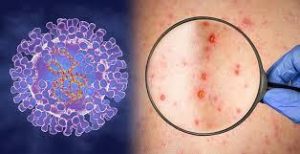
I received this in a newsletter from a supplier and thought it worth sharing.
Again panic, again worry. With first news of monkeypox cases in the US, Europe, Canada, I feel like a call center employee. I keep getting calls from patients who are obviously extremely worried, asking me a lot of questions: What is monkeypox? How is it transmitted? How dangerous is this disease? How to recognize and treat it? Is the world facing a new epidemic?
For my patients, but also for all readers, I will answer each of these questions one by one, in order to bring more clarity and to calm the spirits as much as possible.
What is monkeypox?
Monkeypox is a rare disease caused by the monkeypox virus, is structurally related to the smallpox virus, and causes a similar but usually milder disease.
Monkeypox, like smallpox, belongs to the group of orthopoxviruses. Despite their name, monkeys are not reservoirs of monkeypox virus. Although the reservoir of the disease is unknown, the main suspects are small rodents (such as squirrels) from the rainforests of Africa, mostly found in West and Central Africa.
How is it transmitted?
Monkeypox is likely transmitted from animals through contact with bodily fluids, including droplets of saliva or nasal secretion, or contact with wound exudate. Person-to-person transmission is inefficient, and it is believed that infection occurs mainly by airborne droplets through prolonged close contact. The overall re-infection rate after contact with a known source is 3%, and rates up to 50% have been reported in people living with a person infected with monkeypox.
How dangerous is this disease?
In most cases, the incubation period lasts from 6 to 16 days, but it can last up to 21 days. The infected person develops a rash that can be painful and itchy. As a rule, the disease proceeds in a fairly mild form and goes away on its own in two to three weeks. The mortality rate for monkeypox outbreaks ranges from 1% to 10%. Most deaths occur in younger age groups.
How to recognize and treat it?
Monkeypox is not as contagious as smallpox, but can cause more severe illness in immunocompromised people. It manifests as a pseudoflu syndrome with fever, headache, muscle aches, bone pain, and extreme fatigue.
A few days after the appearance of these signs, redness begins to appear on the skin, after which it develops like lesions of smallpox or chickenpox. So the redness turns into blisters, which then turn into crusts.
One of the characteristics that distinguishes monkeypox from smallpox is swollen lymph nodes.
The evolution of the disease is about 2-3 weeks and has no specific treatment. As a prophylaxis, the smallpox vaccine also partially prevents the disease.
The treatment consists in the administration of vitamins, symptomatic anti-inflammatory drugs. It has been found that people, even if they get the disease, if they are vaccinated against smallpox, they have mild forms of the disease.
Is the world facing a new epidemic?
There is a reason for optimism: the fact is that it is quite difficult to catch monkeypox. To do this, you need to communicate closely with the inffected person for a long time. So, we should not expect a “covid” scenario. That is, to put it mildly, this is not the same as fighting the coronavirus, which can be contracted even through ventilation. There is, of course, no such risk here.
But we shouldn’t relax too much either. The fact is that monkeypox still does not have zero mortality: the larger the outbreak, the higher the mortality.
I hope I have answered at least some of the questions that concern you the most. My advice is to stay calm and not forget about hygiene rules. It may sound trivial, but experts say that common household disinfectants can kill the monkeypox virus.
Stay healthy!
